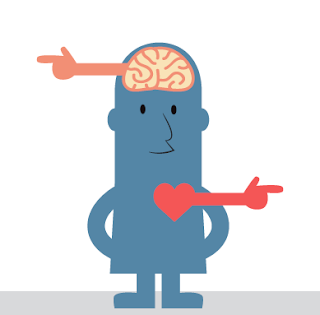Have you ever laughed
until your stomach hurt? Until there are no sounds but
just teary-eyed flailing of arms?
Happy emotions can do a
lot – elevate your mood, for instance. The U.S. News
Health says laughter
improves heart health. No wonder then, that we instantly
connect to brands that
make us laugh. Brands that provoke some emotion,
make us feel. That is
the key to stand apart – make consumers feel something.
According to the
Atlantic, “over the past decade, an abundance of
psychological research has
shown that experiences bring people more
happiness than
possessions.”
And that is what brands
all over are clamouring to deliver – a meaningful
customer experience. It
is the key to customer loyalty, and a major influencer
along the buyer’s
journey.
Let us look at how
brands are forming these connections, giving people
experiences worth
remembering.
HOW NOT TO BE ‘NASALLY MISUNDERSTOOD’
– OTRIVIN SHOWS THE WAY
Otrivin is Novartis
India’s flagship brand in the OTC nasal decongestant
category. It is a space
densely populated with remedies ranging from balms
to tablets and inhalers
to nasal drops. Consumers know the brand, but do
not know how it provides
superior relief. In a way, it was like any other
product in the category.
What becomes paramount
in this situation, is enhancing trials and creating
brand preference among
the target audience – in Otrivin’s case, males in the
age group of 25-44
years. Currently, consumers live with, and ignore the
problem of nasal
congestion until it becomes severe, a behaviour which was
acting as a barrier in
getting trials.
“To develop the TVC, the
agency tapped into the consumer insight that
when a person is
suffering from a blocked nose, he cannot speak clearly.
This not only hampers
his performance but also causes social
embarrassment, as he is
‘nasally misunderstood.’
The inability to speak /
breathe clearly, and being ‘nasally misunderstood’
was a crucial insight
into developing the TVC – a welcome relief, comic
even, that drove the
point across quite effectively, and even made viewers
laugh while doing so.
LISTERINE - THE SELF-MADE SOLUTION TO
BAD BREATH
Before becoming the
go-to solution for oral freshness and as an antiseptic
mouthwash, Listerine was
used for anything from cleaning floors to curing
gonorrhoea. But in the
1920’s, the smart people at Listerine found that the
composition could cure
chronic halitosis – bad breath. And there began a
radical shift in
positioning – the communication dramatized how people
were turned off by those
with bad breath. It was not such a big deal back
then, but this shift
drove Listerine to becoming a multi-million dollar brand in
less than a decade. Bad
breath was made the enemy, and Listerine, the
knight in shining
armour.
The emotional connect
here was everyone’s intrinsic need to be close to
people they liked, and
possibly help intimacy.
SAVING MILLIONS OF LIVES – ALL WITH A
SIMPLE BINDI
The bindi – as instant a
marker of being an Indian woman as the saree. Visit
any Indian village, and
the one thing you will almost instantly notice is the
bindi on the women’s
foreheads. This dot that has several meanings, from
the religious to the
spiritual and even cosmetic. But did you know, that this
small dot has helped
millions of women in rural areas lead better, healthier
lives? Well, here’s the
story.
Lack of iodine has been
linked to several life threatening medical conditions
such as breast cancer,
brain damage and pregnancy-related complications.
And in India, iodine
deficiency is a grim reality finding its root in the inherently
deficient soil of the
subcontinent. Adding to the problem, is the fact that in
spite of iodine-fortified
salts being introduced, close to 350 million people
still have not started
using it.
This unique problem
needed an equally unique solution. And the bindi came
to the rescue. Something
so ubiquitous, something that’s part of everyday
life, the bindi was
turned into the ‘Life-saving Dot (Jeevan Bindi).’
Special bindis were
manufactured with a small dose of iodine in them.
Flawless drug delivery
combined with zero compliance issues – the
Life-saving Dot is what
all pharma products aim to be.
‘A RELIEVING STORY’ – MOOV’S SUCCESS FORMULA
Stressful work
atmosphere and long hours filled with lectures, presentations
and activities, and a
lifestyle that leaves no room for exercise – all these come
together to create an
ideal for backache to set in. Relief remains elusive, with
pained expressions like “aah”
slowly becoming part of vocabulary.
Moov entered this
distressed space, with its benefit of relief closely locked
in with its message. A
message that brought smiles to everyone’s faces,
and respite from
backache.
“Aah se aha tak”, an
expression that encapsulates ‘from pain to relief’ drove
home the explicit desire
for a credible relief process. And helped Moov
secure a solid position
in the minds and hearts of consumers.
There you have it – a
change in vocabulary that remains true to the product,
aids recall and ensures
presence in almost every Indian home. This is the
spirit of Moov, a friend
that has seen a long, unbroken continuum with
consumers’ lives.
EMOTIONAL BRANDING – GETTING STARTED
We have now seen
examples of how consumers connect with brands that
elevate their benefits
to an emotional level. Mastering the messaging, then,
might seem like a daunting
task. Let us strip the concepts and reveal some
simple truth behind the
messages. Here are the key takeaways –
Know your target
audience and what they feel, want and need.
Know the emotions that
your brand and marketing materials should evoke.
Craft marketing messages
that skilfully trigger the emotions in your target
audience in a way that
aligns them with your brand.
Ready to give emotional
branding a go? We’d love to hear how you did.
References:
1. http://www.bestmediainfo.com/2012/01/otrivin-shows-the-way-not-to-be-nasally-misunderstood/
2.
http://www.referralcandy.com/blog/feels-13-examples-emotion-centric-marketing/
3.
http://www.thebetterindia.com/21565/jeevan-bindi-can-save-million-of-lives-iodine-patch-innovation/
4.
http://www.superbrandsindia.com/images/brand_pdf/consumer_1st_edition_2004/moov/moov.htm








